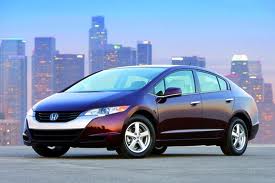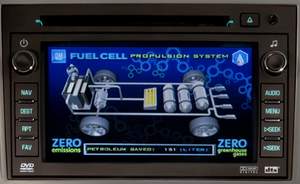
Of course, they never left, but the relentless focus on pure battery electric cars and plug-in hybrids as available zero emissions transportation solutions has overshadowed the technology that many automakers consider the most “elegant” solution to the challenge of replacing the internal combustion engine.
The most recent news is the announcement of a joint venture in hydrogen-powered fuel cell electric vehicles (FCEV) between General Motors and Honda. This follows by a couple months a similar alliance between Daimler (Mercedes-Benz), Ford and Nissan. BMW and Toyota have also banded together on fuel cell development.
While the deals sound a lot like pre-competitive alliances that automakers often pursue, the commercial horizon is much sooner for fuel cells than many might realize. Hyundai, one of the few major companies, along with Volkswagen, who is going it alone, has already started series production of 1,000 FCEVs (to be completed by 2015). Toyota’s FCEV goes on sale next year; Honda has built and leased 100 of its Clarity FCEVs; Daimler has built and deployed several hundred of its F-Cell cars. That said, the leap to the next level (thousands of cars instead of the current hundreds) is now expected by 2020.
The Hydrogen Joke
The inside-the-industry joke has been that fuel cell vehicles are the cars of the future—and always will be—with the subtext that the future is perpetually 20 years away. Based on the recent activities in the field, that 20 years may have shrunk to about five.
The attraction of fuel cell vehicles for automakers is clear.
- The cars work just like electric cars;
- They’re quiet,
- They use proven electric motors that provide quick acceleration,
- They present configuration opportunities since the fuel cell is smaller than an engine and can be placed virtually anywhere on the car,
- They don’t have the range issues of battery electric cars because instead of relying on stored electrical energy from a battery, the FCEV creates its own electricity from the hydrogen passing through the fuel cell.
The basic technology is old (more than 150 years old), but it has been honed by automakers and innovators during the past two decades (or in GM’s case, more than four decades) so that its durability and deliverable range is comparable to a gas engine while it is much more efficient and environmentally benign at the tailpipe (the only thing coming out is water vapor). And automakers also can count on extra credit in the CAFE fuel economy game.
Challenges Remain
Of course, hydrogen fuel cells also have challenges, which are alluded to in the “car of the future” joke. While fuel cell costs are down, they’re still significantly more than that of a traditional gas or diesel engine. Hydrogen, too, even when steam-reformed from currently cheap natural gas, carries a premium. Storing the hydrogen involves having a tank that needs to be of a material that can hold the gaseous fuel in a highly compressed state compared with a gas tank that can be made from relatively cheap composite material. Infrastructure has to be built, unlike ubiquitous gasoline and diesel stations and electric plugs that can be found everywhere.
But that infrastructure is being built around the world. California just offered $20 million for companies to continue to build stations needed for the initial vehicle launches and Korea, Japan, Germany and other countries have active government-industry coalitions ramping up stations.
While it still has some significant hurdles, the hydrogen future appears to be closer than ever with the new alignment within the auto industry. These alliances give them an edge on cost issues and presents a more unified front to skeptics who have written off automakers’ fuel cell focus as a diversion from other technologies like battery electrics. In reality, no automaker can afford to pass on any zero emission technology, particularly one this developed and seemingly ready-to-go. But, as with predictions of battery breakthroughs and magical alternative fuels produced from waste, it would be wise to file these latest announcements and check back in a couple years to see what real progress has been made.


The California Legislature is currently considering legislation that will fund up to 100 H2 stations to launch the commercial market for fuel cell vehicles. The legislation is moving through with bi-partisan support and has 80+ stakeholders in support, including an unlikely alliance that includes the Natural Resources Defense Council, American Lung Association, California Trucking Association and the Western States Petroleum Association, among others.
@Keith Malone,
Thanks for that update. It does look like California may become one of the first to have the beginnings of a hydrogen highway. There are a lot of people pulling for it in the state. – ed. Michael